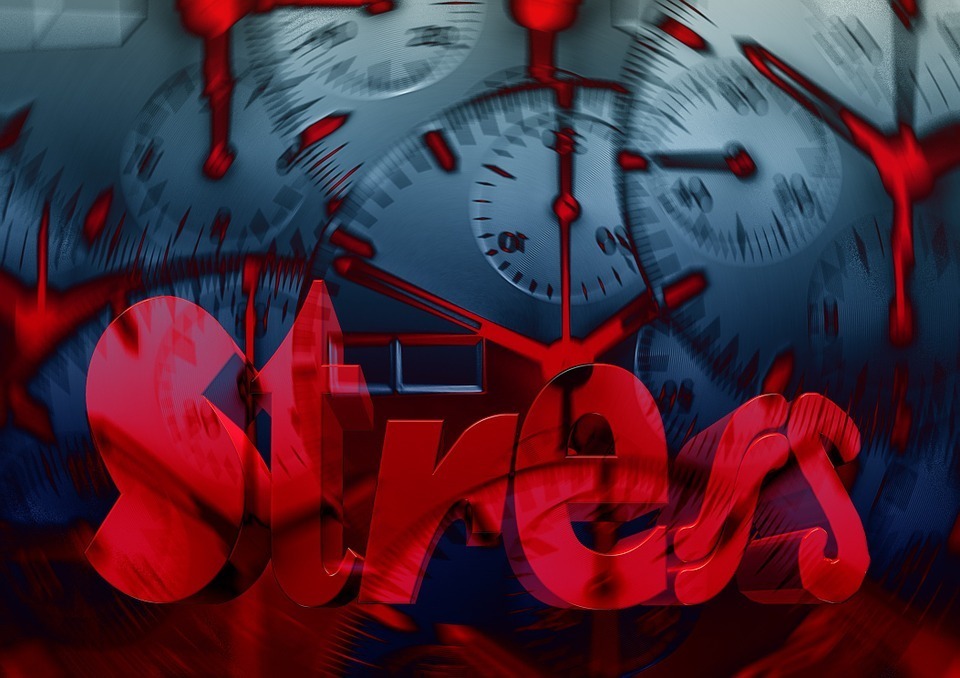By: Elysia Koury, a Mason student majoring in Public Administration
“The journey of a thousand miles begins with one step.” – Lao Tzu
For most of my life, I’ve had to-do lists written out, miles long and yet unfinished. When I tried to stop whatever I was (or wasn’t) doing – scrolling online, daydreaming, or staring into space – to get started on a task, I just couldn’t. I didn’t understand why. Even if I could finally get started, I could barely maintain my focus long enough to get my tasks done. It felt like I had to roll a boulder uphill to accomplish even the simplest tasks. I felt frustrated at myself constantly. It would be years later that I’d learn the term for what I was dealing with: executive dysfunction. Many people struggle with executive dysfunction. If you’re one of them, or if you simply feel overwhelmed by the length of your to-do list, use these well-being tips to help you relieve stress and complete your tasks well.
What is Executive Dysfunction?
Executive dysfunction, according to the Cleveland Clinic, is a symptom that happens with conditions that disrupt the brain’s ability to control thoughts, emotions, and behaviors. Executive dysfunction occurs when important executive functions are impaired – namely, working memory (short-term memory), cognitive flexibility (the ability to adapt to unexpected change, as well as the ability to shift from one task to the next), and inhibition (the ability to stay focused, and to keep yourself from acting on impulse).
Commonly, executive dysfunction is usually associated with ADHD, but it is also common with depression, anxiety, and a diverse variety of medical conditions, Medical News Today reports. Neurotypical individuals might also temporarily experience executive dysfunction if they are exhausted, under a lot of stress, in pain, or in distracting environments. In college, where strict deadlines and all-nighters are commonplace, many students may be struggling with executive dysfunction at any given time.
What Does Executive Dysfunction Feel Like?
Executive dysfunction can feel like being stuck. While trying to transition between activities, you might end up somewhere in between, either unable to break from the previous task or unable to move onto the next one. If the latter, you may find yourself in limbo, scrolling on social media, or staring off into space while you try to get yourself to move on.
Though it isn’t referenced nearly as often, executive dysfunction can also feel like it is impossible to focus, no matter how hard you force your brain to stay on track. You might find it difficult to keep yourself from searching random questions online, or having to keep reminding yourself to focus instead of chasing interesting trains of thought. It can also make it easy to forget details, steps in your routine, and even bigger things like appointments.
Managing Executive Dysfunction
Here are a few ways to manage executive dysfunction:
Write lists with manageable steps. Sometimes, you might get stuck because the task seems so important or complicated that you don’t know where to start. Breaking it down into the simplest steps possible can make it easier to start and manage. For example, if you have to write a paper, start with “open laptop” and “make a new document.” If you can, write steps down on a physical piece of paper as well. That way, you can cross off each step as you complete it, giving yourself visual feedback for how far you’ve come since you started. This will help keep the ball rolling as you move on to the more difficult parts of the task.
Set alarms. Often, a great way to transition from being stuck is to be jolted out of it. Setting alarms, particularly with loud ringtones, can be enough to break your attention from whatever you’re stuck on, and can give you an opportunity to transition into what you need to be doing. Alarms are also a great way to stay on time for events and appointments, including classes. They will still be audible and visible on do-not-disturb settings (unlike calendar notifications or reminders). Set an alarm enough time before the event that you will be able to get ready.
Simplify your organization. Keeping your workspace decluttered is important to stay focused, but what happens when organizing itself results in executive dysfunction? You can combat this by making sure items take only one step to put away. For example, if you have pens, get an open desktop organizer (one step: put pen in organizer) instead of putting them in your desk (multiple steps: open drawer, put away pen, close drawer). This way, you are less likely to get stuck transitioning between steps.
Get enough sleep. One of the major causes of executive dysfunction in neurotypical people is lack of sleep/exhaustion, and lack of sleep can make existing executive dysfunction difficulties much worse. Getting between seven and nine hours of sleep a night will make it much easier to focus past obstacles and to “snap out of it” if you do get stuck. If you have no choice but to stay up late at night, take naps during the day: even sleeping half an hour can make it easier to power through, and longer naps (at least one hour and 30 minutes, which is a full REM cycle) can get you into a better mindset, making it easier to focus and transition between tasks.
Ask someone you trust to help keep you accountable. Get someone to help you! Tell your friends you intend to work at a certain time, or give them updates on your progress. If possible, work at the same time or in the same space (a practice known as “body doubling”). Feeling the pressure of someone “counting on you” can sometimes kick your brain into high gear when nothing else works.
An overwhelming to-do list doesn’t have to derail your goals. If you’re stuck, try some of these well-being tips to make progress!
Additional Resources
Mason’s Learning Services and Disability Services both offer many helpful resources for focusing on tasks and meeting other learning goals.
For maintaining focus, there are many apps that help you track and visualize time passing. Forest is a great one, with a large countdown display over a little plant of your choosing. It also fully blocks you from using your apps (though you can customize the allow/disallow list in the settings) while you’re focusing, making it far less likely to get distracted (or stuck) on social media. A similar app, Flora, is free, but it doesn’t work as well.
You can use these in tandem with the pomodoro technique, which divides work/break sessions into alternating intervals. While the most common interval is 25/5 (25 minutes of work, then 5 minutes for a break), there are dozens of different combinations, such as the 30/10 and 50/10. I personally like to use the 50/10 format. This college student’s YouTube channel features lots of aesthetically pleasing “study with me” videos that use that format.
This article from Connected Speech Pathology does a great job of explaining executive dysfunction in greater detail, including a few examples of what it looks like in different age groups.
Write one of these Thriving Together Series features! We’re looking for contributions on all topics related to well-being. Read other Thriving Together Series articles here and contact us at cwb@gmu.edu for guidelines. Thank you for helping our Mason community thrive together online!






















